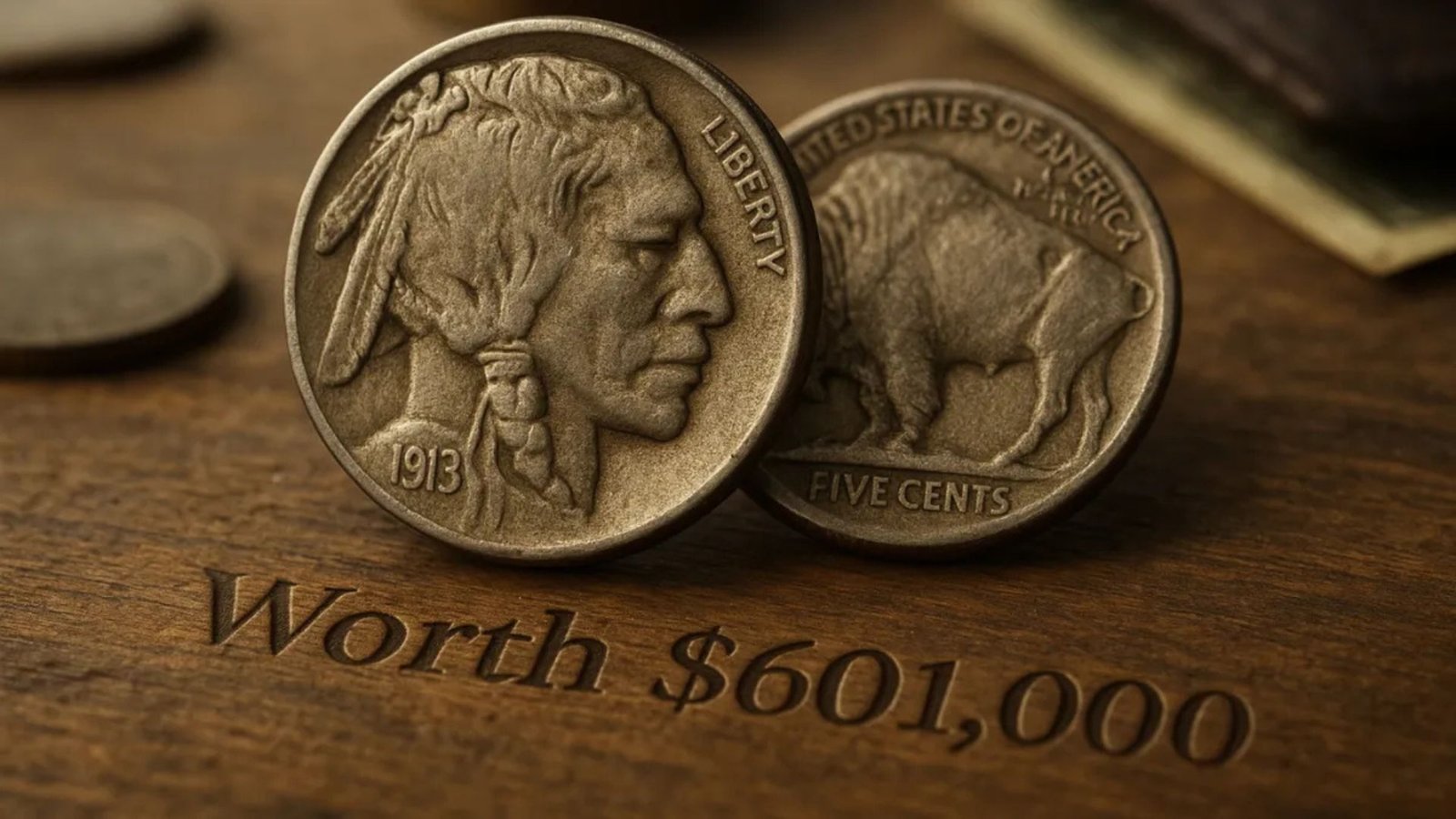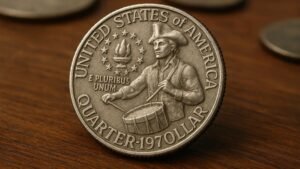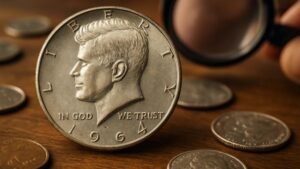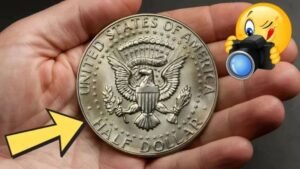Have you ever wondered if the coins in your pocket could be worth a fortune? The Buffalo Nickel, also known as the Indian Head Nickel, is a classic American coin that might just be hiding in your spare change. Some rare versions of this coin can fetch up to $601,000 or more at auctions! In this guide, we’ll break down what makes a Buffalo Nickel valuable, how to spot one, and why you should check your coins now. Let’s dive into this exciting treasure hunt!
What Is a Buffalo Nickel?
The Buffalo Nickel is a five-cent coin minted by the United States from 1913 to 1938. Designed by James Earle Fraser, it features a Native American profile on one side (the obverse) and an American buffalo on the other (the reverse). This coin is iconic for its unique design and historical significance, making it a favorite among coin collectors.
Why Are Some Buffalo Nickels So Valuable?
Certain Buffalo Nickels are worth a lot because of their rarity, condition, or unique features. Factors like minting errors, low production numbers, or excellent preservation can drive up their value. For example, a rare 1918/7-D Buffalo Nickel in great condition sold for $601,000 at an auction due to a special minting mistake.
Key Factors That Make a Buffalo Nickel Valuable
To determine if your Buffalo Nickel is worth big money, you need to check for specific details. Here’s what to look for:
1. Minting Errors
Minting errors happen when something goes wrong during the coin-making process. One famous error is the 1918/7-D overdate, where the number “8” was stamped over a “7” on the coin’s date. This mistake makes the coin extremely rare and valuable.
2. Mint Marks
The mint mark is a small letter on the coin that shows where it was made:
- D for Denver
- S for San Francisco
- No mint mark means it was made in Philadelphia
Coins from certain mints, like the 1918/7-D (Denver), are rarer and more valuable.
3. Condition of the Coin
The condition, or grade, of a coin affects its value. Coins in excellent shape (called “mint condition”) are worth more. Look for coins with clear details, minimal scratches, and no wear. Professional grading services like PCGS or NGC can evaluate your coin’s condition.
4. Rare Dates and Varieties
Some years and varieties of Buffalo Nickels are harder to find. Here’s a table of rare Buffalo Nickels to watch for:
| Year | Mint Mark | Special Feature | Estimated Value |
|---|---|---|---|
| 1918/7-D | D | Overdate error | Up to $601,000 |
| 1937-D | D | Three-legged buffalo | $500–$100,000 |
| 1916 | D | Double die error | $10,000–$281,000 |
| 1926 | S | Low mintage | $1,000–$50,000 |
How to Check Your Buffalo Nickel
Ready to inspect your coins? Follow these simple steps:
- Look at the Date and Mint Mark: Check the year on the front of the coin and look for a mint mark below the buffalo on the back.
- Examine for Errors: Use a magnifying glass to spot errors like the 1918/7-D overdate or the 1937-D three-legged buffalo.
- Assess the Condition: Is the coin shiny with clear details, or is it worn out? Better condition means higher value.
- Get It Appraised: If you think you have a rare coin, take it to a professional coin dealer or grading service for an expert opinion.
Tools You’ll Need
- A magnifying glass or jeweler’s loupe
- Good lighting
- A guidebook on coin collecting (optional)
Where to Find Buffalo Nickels
You might already have a valuable Buffalo Nickel without knowing it! Here are some places to look:
- Spare Change: Check your coin jar or loose change.
- Old Coin Collections: Look through family heirlooms or inherited coin sets.
- Coin Shows or Shops: Visit local coin dealers or shows to find Buffalo Nickels.
- Online Marketplaces: Check eBay or other platforms, but be cautious of fakes.
How to Sell a Valuable Buffalo Nickel
If you find a rare Buffalo Nickel, here’s how to sell it:
- Get It Graded: Have your coin graded by a trusted service like PCGS or NGC to confirm its authenticity and condition.
- Research Market Value: Check recent auction prices for similar coins to know what yours is worth.
- Choose a Selling Platform: Options include auction houses (like Heritage Auctions), coin dealers, or online marketplaces.
- Avoid Scams: Only deal with reputable buyers and avoid unverified online sellers.
Why Collectors Love Buffalo Nickels
Buffalo Nickels are more than just money—they’re pieces of American history. The design captures the spirit of the Wild West, and their limited minting period (1913–1938) makes them special. Collectors are drawn to their beauty, rarity, and the thrill of finding a hidden gem.
Tips to Avoid Counterfeits
Fake coins are a risk in the collecting world. Here’s how to stay safe:
- Buy from reputable dealers or auction houses.
- Check for signs of tampering, like altered dates or mint marks.
- Get professional verification for high-value coins.
Conclusion
A Buffalo Nickel worth $601,000 could be hiding in your pocket, coin jar, or family collection. By checking the date, mint mark, condition, and errors, you can spot a valuable coin. Whether you’re a beginner or an experienced collector, the hunt for rare Buffalo Nickels is exciting and potentially rewarding. Start searching today—you never know what treasure you might find!
FAQs
1. What makes a Buffalo Nickel valuable?
A Buffalo Nickel’s value comes from its rarity, condition, minting errors (like the 1918/7-D overdate), or low mintage years.
2. How do I know if my Buffalo Nickel is rare?
Check the date, mint mark, and look for errors like overdates or the three-legged buffalo. Get it appraised by a professional for confirmation.
3. Where can I sell my Buffalo Nickel?
You can sell through auction houses, coin dealers, or online platforms like eBay. Always get the coin graded first to ensure authenticity.
4. Can I find a valuable Buffalo Nickel in my change?
Yes! While rare, valuable Buffalo Nickels can still be found in spare change, old collections, or at coin shops.
5. How do I avoid fake Buffalo Nickels?
Buy from trusted sources, check for tampering, and have high-value coins verified by a grading service like PCGS or NGC.




